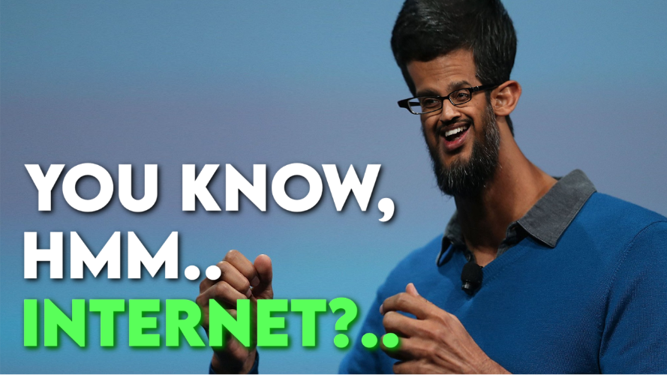Persuasive Tech Presentations and Public Speaking Algorithm
July 10, 2023 •

Good public speaking is crucial to captivate an audience. I want to help you nurture this skill. Please use this skill for good and not for world domination.
What is a technical presentation?
This presentation explains technical stuff, delivering it in simpler terms. It involves reducing the content difficulty while educating or convincing others to adopt whatever is presented.
You take something complex and make it easy for all to grasp. How can you improve public speaking and make a good tech presentation? Let's look at some crucial public speaking tips.
Content and how do you present it
What you say and how you say it matters. Everything revolves around content. I usually ask myself about the presentation's purpose. I prioritize understanding what's important to the audience and what's in it for them.
Are you forming a new opinion? Are you promoting something? Are you looking for funding?
These objectives should be clear because they form the foundation for everything else. Here are other vital pointers that contribute to the best content for a public speaking project:
- Present one idea at a time.
- Eliminate jargon.
- Have a structure.
- Include stories and personal experiences.
- Offer inspiration, not just information.
- Use visuals.
- Be authentic.
- Have short pauses in between the presentations.
Catchy and easy-to-understand slides
Slides form a big part of technical presentations. All slides should have an introduction and a conclusion. The intro should convince your viewers that it is worth their time and attention.
The last slide (conclusion) reminds the audience of the presentation's gist. Whatever is on this slide should leave an imprint in their mind that encapsulates your message.
Here are other things to keep in mind:
Don't begin your presentation with an outline slide (only during each vital section).
Keep slides clutter-free. This means not using a lot of text and other visual material. A great way to implement this rule is to use bullet points frequently, making your content easy to skim.
Maintain consistent builds or animations.
I use descriptive titles for each slide (and don't use the same one for more than one slide)
I never read texts and other info on slides verbatim. The content is there as a guide. It's best to speak naturally.
Keep fonts larger (and make specific information bold). Stick to standard fonts like Sans-Serif, Georgia, Arial, etc.
Incorporate images and other visual elements like diagrams. These shouldn't be generic but tailor-made for your presentation. The visuals must avoid glitz or fanciness. Keep them simple, but attractive.
Presentation
This is where your public speaking confidence should shine through. How is this achieved?
I find someone who appears actively engaged and focus on them. This gives me a general vibe of my audience.
Instead of fillers, I take a breather or drink some water. This exudes that I'm not afraid of silence.
I always remain standing during my presentation. This makes me appear more energetic and allows me to make eye contact.
Don't face or stand before the screen. It prevents you from making that connection with the viewers. Always face them. It should be brief if you need a moment to look at your equipment, like a laptop.
Avoid filler words such as "um," "uh," "er," and so on. They make you sound hesitant. You can eliminate these when practicing techniques for public speaking.
Remember to smile.
If you are passionate about a subject, it will show and be attractive.
Body language is another crucial element. Aside from eye contact and having a smile:
Avoid crossed arms, hands behind your back, or in your pocket.
Use various hand gestures.
Keep an upright and relaxed posture.
Move a little (if the environment allows it) to add variety to your presentation.
Remember, these are general guidelines. It's a case of different strokes for different folks. You should be able to find what works for you.
Practice talks
Practice is involved in mastering the art of public speaking. I started my practice talk with a tiny audience (not above ten). An environment with actual people allows you to receive honest feedback that you can implement when it's show time.
Recording the session helps you see how you appear in a public setting. Another tip is to hand out slides in hard copy format (with slide numbers) for your audience to make helpful notes.
This is another type of feedback to help prepare you for the talk. Practice as much as you can by yourself aloud. Use all the available opportunities, from when you're in the shower to looking at the mirror.
Speak with conviction
Conviction builds confidence in public speaking. Presenters must have the expertise and show they've studied their subjects well to persuade their viewers. The first thing you can do here is to memorize your presentation instead of reading it aloud.
This doesn't seem to leave any room for doubt in your audience and shows your authority on the subject. Here are other ways of adding conviction:
Use the active voice instead of the passive voice. It's more powerful to say "leaders must present" than "leaders should do the presentation."
Have an affirmative tone by taking out negative language or vocabulary with uncertainty. For example, saying, "I think government leaders are not doing enough to address global poverty," doesn't exude confidence. Why? Firstly, "I think" sounds like a guess. The statement needs more urgency. So, "I believe government leaders must address global poverty" makes you sound commanding.
Avoiding ambivalent words like "sort of," "kind of," etc. is another way to have conviction. It also helps to make your point concise and has less filler.
Offer ideas or alternative solutions.
No matter how persuasive you are, be prepared for objections. It means you should practice doggedness. Have alternative solutions and ideas to address obstacles that your audience might face.
To never be caught off guard, use a simple tip in a tricky situation. Good advice is to say 'Let's take this afterwards.' This could even involve asking for a second shot at a presentation where you can make adjustments. Most people will never actually discuss something later. The point is to pay attention to your viewers and deliver what resonates with them.
How can you overcome the fear of public speaking?
Fortunately, there are various ways of overcoming the fright.
Be knowledgeable about your topic. When someone knows something well, they can speak about it for hours without hesitation. Knowledge is one of many crucial things. You can reduce the fear by understanding how you will respond to challenging questions.
Get organized ahead of time.
You plan to fail if you fail to plan. Practice, practice, practice! Practice with a few people you trust to give you feedback or practice alone in front of a mirror. Make a video to see where you could improve.
I like incorporating visualization. Remain in a mind state of optimistic thoughts. I know that positive thinking lessens anxiety, which will help deliver your message in the smoothest way possible.
Take deep breaths. I do this before the presentation and during my speech. It calms my nerves and helps my audience process the content steadily.
How to start a technical presentation?
Include all these elements in your tech presentation:
State core concepts of the presentation
The first 30 seconds should be a brief self-introduction to let the audience know who you are. You'll want to convey your headline message, the big idea for your viewers to absorb instantly.
Make a captivating statement.
An interesting statement should come as you're stating the core concepts. I make provocative statements to invoke surprise, amusement, or even fear.
Another technique is sharing a personal story or joke related to the topic. The point is to break the ice. You can judge how best to do this depending on your presentation and audience.
Organize information meaningfully
After the introduction and statement, you'll want to guide your viewers on the core topics that will be covered. This is where the organization is necessary. You can divide your talk by the intro, body, and conclusion. I've covered the introduction. Let's cover the body.
There are several ways of delivering this section. I prefer a chronological approach where I recount events from the start of a particular time until now. Another method is where I talk about a problem before offering a solution.
Regardless, your body should have key and structured points you address individually. These should be supported with as much compelling evidence as possible. Briefly summarize the points by relating them to the main topic before moving to the next one. Your audience should be aware of the various transitions.
Finally, your conclusion should have a resonating message that reinforces the initial purpose of your presentation. Have a compelling call to action for your audience to learn more or contact you.
Remember that thanking them is necessary.
Use a professional layout and design.
We know that a person's attention span is short. A surefire way to captivate people is by getting them to participate in your presentation. I include a lot of interaction with the audience by:
- Asking "raise your hand if..." questions or open-ended questions
- Running a real-time poll that the people can access on their app
- Allowing your audience to access your slides on their phones using an app
- Having your viewers repeat certain information or phases aloud
- Taking questions during the presentation
- Explaining an exercise that the audience can do in a few minutes in pairs
Being a good speaker has several benefits. One of them is likely to know how to keep your developers happy. However, if you are hesitant to speak up, this article can help: How To Keep Your Developers Team Happy.


